Originally prepared for Vegetable MD Online.
This page includes symptoms caused by:
Bacteria
Angular Leaf Spot | See factsheet for more information (LIHREC)
Symptoms: Brown spots, 1-4 mm in diameter, circular, water-soaked often with raised white center. Leaf symptoms also present.
Bacterial Leaf Spot | See factsheet for more information (LIHREC)
Symptoms: Brown spots varying greatly in size (up to a half dollar). Can develop into a water soaked rot that leads to fruit collapse. Leaf symptoms also present.
Fungi & Oomycetes
Anthracnose | See factsheet for more information (LIHREC)
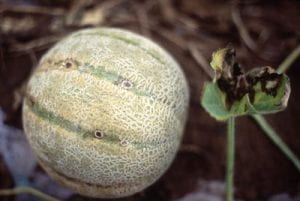
Symptoms: Circular and dark brown spots, 2-5 mm or larger in diameter, sunken with salmon-colored fungal growth under moist conditions or tiny black specks. Spots often develop in storage. Leaf and stem symptoms also present.
Choanephora fruit rot
Symptoms: Begins as a wet rot on the blossoms and blossom end of fruit. Develops into a soft and watery rot covered with distinctive fungal growth characterized by whitish-gray fungal strands and pincushion-like black spores.
Fusarium dry rot | See factsheet for more information (LIHREC)
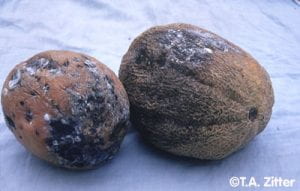
Symptoms: Tan, circular lesions with a firm, dry rot. White fungal growth also present. Often first found on the surface of the fruit that is touching moist soil.
Gummy stem blight | See factsheet for more information (LIHREC)
Symptoms: Black lesions that are circular or irregular and can become large. These are initially water-soaked and turn pinkish before developing into the black lesions in the picture above. Fruit will often collapse due to other rotting, opportunistic organisms. Symptoms and pycnidia often develop in storage.
Phytophthora fruit rot | See factsheet for more information
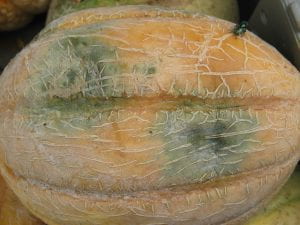
Symptoms: Water-soaked or sunken lesions that can enlarge to encompass the entire fruit. These are covered in white yeast-like fungal growth.
Plectosporium blight | See factsheet for more information (LIHREC)
Symptoms: Light tan lesions that are small, spindly-shaped, sunken, dry, and scabby. The lesions primarily develop on fruit stems.
Pythium rot
Symptoms: White circular lesions 1-2 mm in diameter that are raised and can enlarge to encompass the whole fruit.
Scab
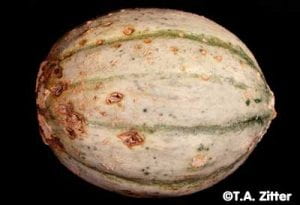
Symptoms: Beige or brown circular lesions that are dry, corky, and small. These are initially sunken and can occasionally be raised.
Sclerotinia white mold
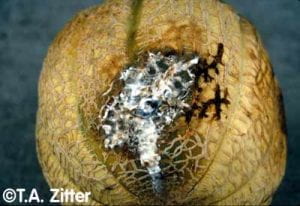
Symptoms: Watery and odorless rot characterized by a white, cottony mold and black, hard, and pea-like bodies. This can develop in the field or in storage. Occurrence is often localized, especially where beans or cabbage were grown.
Septoria
Symptoms: White lesions that are circular, 1-2 mm in diameter, and raised like a rash.
Phytoplasmas
Aster yellows
Symptoms: Fruit are smaller and lighter in color than normal.
Viruses
Squash mosaic virus | See factsheet for more information (LIHREC)
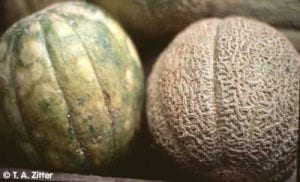
Symptoms: Fruit are mottled, discolored, distorted, bumpy, and lack netting. The whole plant may also be stunted.
Miscellaneous
Rodent injury
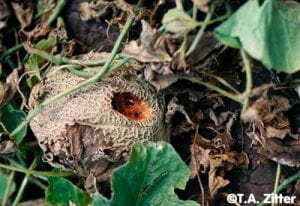
Sunscald
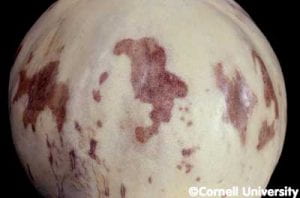
More information/prepared by:
- For more information, please contact:
Meg McGrath – mtm3@cornell.edu & Chris Smart – cds14@cornell.edu


